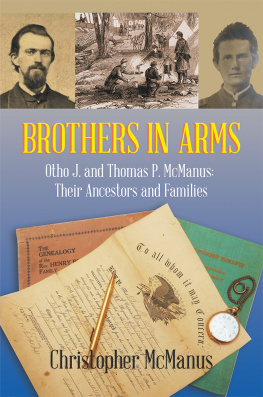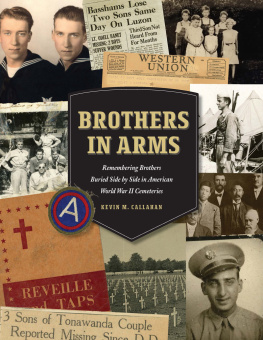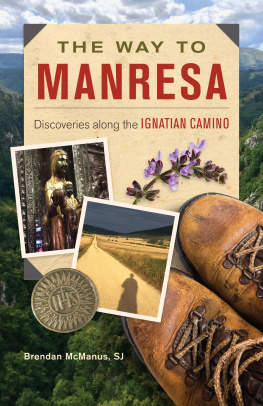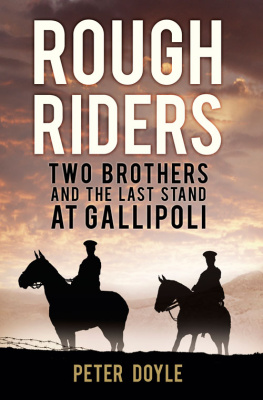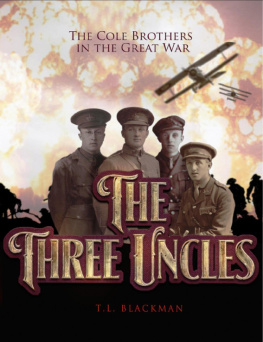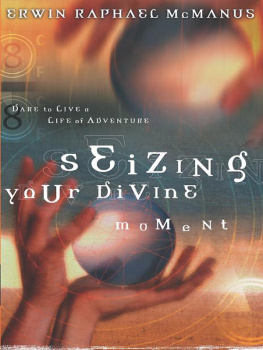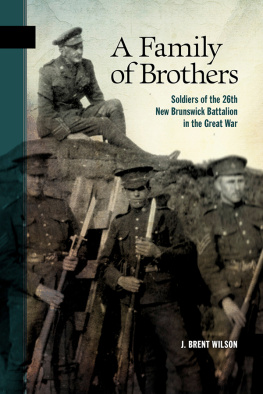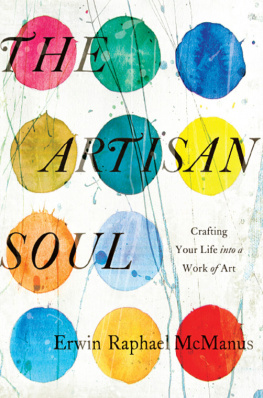Brothers in Arms
Otho J. and Thomas P. McManus:
Their Ancestors and Families
Christopher D. McManus
Copyright 2019 by Christopher D. McManus.
Library of Congress Control Number: | 2019900429 |
ISBN: | Hardcover | 978-1-7960-1010-7 |
Softcover | 978-1-7960-1009-1 |
eBook | 978-1-7960-1008-4 |
All rights reserved. No part of this book may be reproduced or transmitted in any form or by any means, electronic or mechanical, including photocopying, recording, or by any information storage and retrieval system, without permission in writing from the copyright owner.
The views expressed in this work are solely those of the author and do not necessarily reflect the views of the publisher, and the publisher hereby disclaims any responsibility for them.
Rev. date: 11/26/2019
Xlibris
1-888-795-4274
www.Xlibris.com
787755
Contents
Maps
Tables
These pages are dedicated to you, the reader. You are the most important element of this book. You transform dry printed words into vivid people, places, and actions; you use your own experiences to appreciate the depths of the lives and events recorded here.
No two persons ever read the same book.
- Edmund Wilson
Some points to remember when details are forgotten
- Robert McManus, the immigrant ancestor of this line, came to Pennsylvania about 1800. Robert probably came from Ulster Province, Ireland but was not Scots-Irish. He may have been in the linen trade. In Pennsylvania tax lists he was a poor man.
|
- Five of Roberts children each passed down the unsubstantiated story that his wife Nancy was a niece of stateman Alexander Hamilton.
|
- Robert and Nancy McManus had four daughters and two sons. The daughters married men named Snyder, Snavely, Matthews, and Glasener. The Matthews daughter was traced only recently.
|
- First generation McManus descendants all grew up in Franklin County, Pennsylvania, and moved to Ohio in the 1830s.
|
- The immigrants son John Hamilton McManus was a hatter. He and his wife died within a year, leaving five orphans, ages 2 to 17.
|
- Two of the immigrants grandsons are the focus of this book. Both fought in the Civil War. After Othos death in battle, his brother Thomas P. married Othos widow.
|
- Thomas P. McManus spelled his own last name McMannus, McManis, McMannis, or McManus. His father spelled the name McManes. Other last names were also spelled in varying ways.
|
- Othos daughter married a Stephen P. Hicks, beginning a large Hicks clan. Thomas P. had three sons; each had at least one child.
|
- Othos and Thomas mother was Lydia Pearson. The Pearsons were a Quaker family who lived near Gettysburg.
|
- Lydia Pearsons father was a clockmaker, farmer, and merchant.
|
He has gone into service again this time with a commission in his pocket and straps on his shoulders Hurrah for Tom Of such stuff is a hero made. Lieutenant Otho McManus honored his brother Thomas with these words in 1865 in Othos final letter home. Two weeks later, Otho was killed while leading a battle charge at Selma, Alabama.
Otho himself was a true hero, a veteran of more than thirty months of wartime service and frequent exposure to enemy fire. As Otho wrote in an earlier letter: In the last twenty days we have been in eight skirmishes, and have driven the enemy every time. Otho even endured capture to care for a wounded cousin on the battlefield.
To be called a hero by someone as heroic as Otho was high praise indeed. Thomas deserved the praise. Thomas saw nearly four years of wartime service, fought in eighteen named battles, and was severely wounded in his last battle. Fittingly, Otho and Thomas met for the final time on an earlier battlefield, at Chickamauga. As Otho wrote: While moving back to our horses, I was pleasantly surprised by meeting Tom whose regiment was moving out at the same time within a few rods of us = He was slightly wounded in the palm of his right hand - - Otherwise he was well - - His regiment was badly cut up - - his captain ki lled.
Brothers Otho and Thomas McManus deserve to be remembered and honored by future generations, especially for their long record of wartime bravery and endurance, but also for the difficult, impoverished, orphaned circumstances of their upbringing and for the children they lovingly fathered. This book is a brief history of their background, their lives during and outside the Civil War, and their descendants.
Jointly focusing on Otho and Thomas in this memoir is especially fitting. Not only were they brothers, close friends, and comrades in arms, but Thomas married Othos widow and raised Othos daughter as his own child.
~ o ~ o ~ o ~
Some seventy years ago, George McManus privately published a small green book, Thomas Pierson McManus : His Ancestors and His Family . That book remains the primary source for much of what we know of Thomas and Otho McManus ancestors in this country. Significant new facts and previously unknown family lines have recently emerged. Some older traditions and conjectures have been disproved. This present book attempts to merge new knowledge with the old facts and traditions.
George McManus book was a pithy, meticulous, highly readable, very human account. I will emulate his book as best I can. My target audience is two very different kinds of people. The first is relatives who want a concise account of their ancestry with colorful details, but who are bored by humdrum details such as exact dates.
The second audience is much smaller, the rare family researcher who wants as many details as possible as clues to pursue their own research. There are still many gaps in our knowledge of early McManus ancestors. But I hope that details in this book will help future family researchers to focus their own work and to avoid barren bypaths.
Even people bored by family history can learn a lot from books like this. The westward movement patterns mentioned in these pages mirror the mass migrations of our nations history. Individual family migrations are often revealed by where the children were born and where the family were enumerated at each census.
We can also discern family dynamics by noting age differences between husbands and wives, their ages at marriage, numbers and spacings of children, and similar details. Noticing death dates of mothers and their childrens birth dates lessens our initial idea of mothers frequently dying in childbirth, at least for the McManus family lines.
This book will frequently quote from the Civil War letters of Otho McManus. Otho wrote more than one hundred wartime letters to his wife over a period of some thirty months. His polished writing reflected his hopes, ambitions, fears, war experiences, and domestic concerns. If you want to read the full letters, these have been published with commentary under the title Morning to Midnight in the Saddle: Civil War Letters of a Soldier in Wilders Lightning Brigade (Xlibris, 2012).
One caution to readers and to future family historians: some places and dates mentioned in these pages appear ambiguous but are not. For instance, Richland/Ashland County, Ohio describes any locale that was in Richland County before Ashland County was created in 1846, but today is part of the latter county. Pre-1846 records for the locale will be found in Richland County, post-1846 records in Ashland. Dates like 1851/1852 usually indicate that the source was a U.S. census. Early censuses recorded age and not birth year. If the 1860 census recorded an age as 8, that person could be born in late 1851 or early 1852.
Next page
